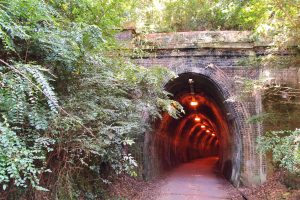Every time we venture somewhere new we learn so much and Belmont Lagoon told a story of many tales. From the history of Cold Tea Creek to the building remains on the spit, it was like peeling back an onion with so many layers. What remains today is a body of water, connected to Lake Macquarie that is teeming with birdlife. Through the ongoing work of Belmont Wetlands State Park (BWSP), this site has been brought back to a healthy balance.
Getting to Belmont Lagoon
In Belmont South, navigate your way to Beach Street off the Pacific Hwy. There is a designated parking area (dirt car park) to the left at the corner of Beach Street & Ocean Park Road. It had been raining the day before we arrived, so we chose to park on the road in Beach Street. The gate is where you’ll come out of this walk so it’s just as good. The trail starts at the designated dirt car park at the back of the houses. It took us a while to work this out, however just head across the large grassed area to the far righthand side of the ‘field’. This is the starting point at the bridge which crosses Cold Tea Creek. Check out a map here.
This walk with kids will take you about an hour and a half. It’s a solid walk so wear good shoes and bring water, however, you’ll be pleased to know that it’s flat. You might have to jump a few puddles but it’s fairly easy to walk.
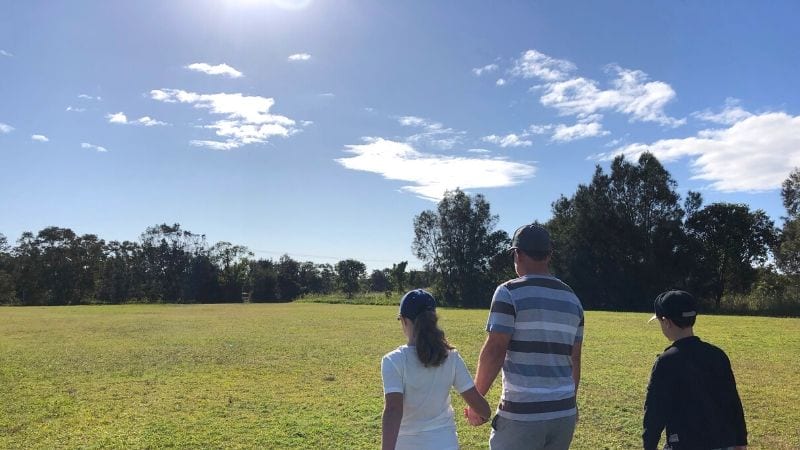
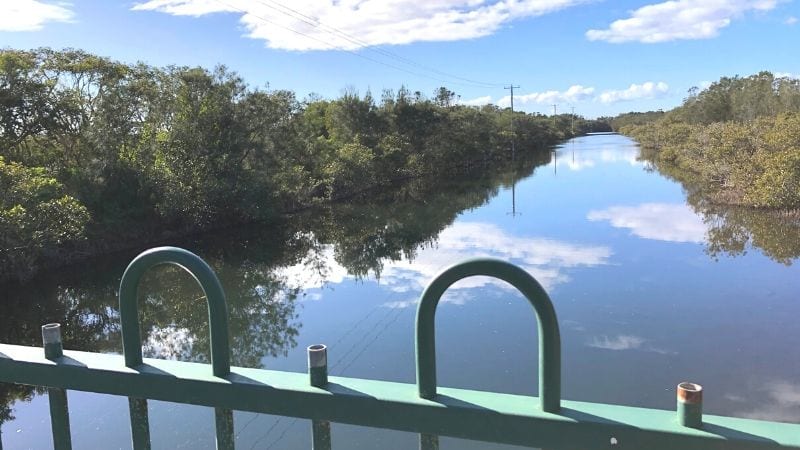
Cold Tea Creek
My mum used to tell me stories of how dad would take my brother fishing down at Cold Tea Creek when he was a little boy. Now I’ve learned so much more. This little creek was part of the Southern Defence Barrier for a possible invasion during World War II. It was believed that Blacksmiths Beach was a likely invasion point, so Cold Tea Creek was excavated as an ‘anit-tank’ ditch to protect Lake Macquarie. What resulted in Belmont Lagoon was an uneven bisection and the introduction of saline to this once freshwater lagoon. The whole ecology of the lagoon then changed.
Industrial history
Belmont Lagoon was part of land leased by BHP from 1925-1987. Coal was mined in this area and in particular under Belmont Lagoon. Right in the middle of the lagoon, they built an air vent for one of two shafts. To access and maintain this air vent they also built a peninsula made out of dirt. This is now known as Belmont Lagoon Spit. When you walk out to the spit you’ll see the remains of a building that once played its role in the mining history.
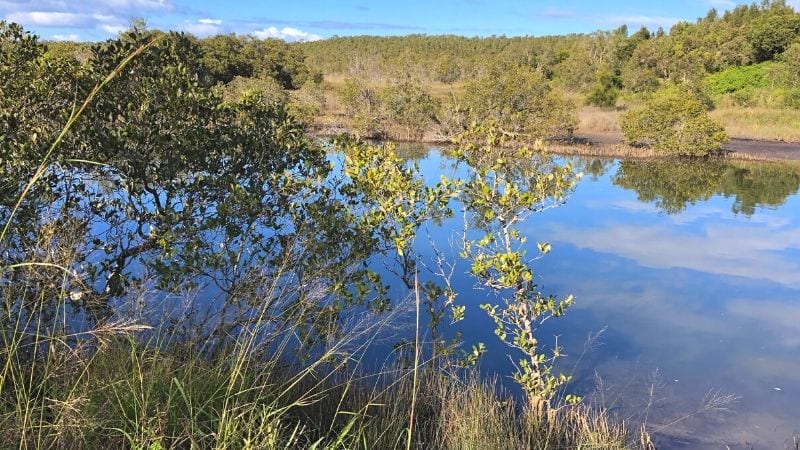

Belmont Lagoon Spit Walk
There are many trails and walks you can explore through the greater Belmont Wetlands area, and Belmont Lagoon Spit is the perfect place to begin. Once you cross the bridge over Cold Tea Creek turn right and follow the trail along the lagoon. This is a lovely walk where you can enjoy marveling at the enormous size of the lagoon and the flora and fauna. At the next intersection, you turn left. On your way back to your car, you’ll follow the track to the right.
This part of the walk is a fire trail, so it’s much wider and not much of a view but great for walking. You can catch glimpses of the sand dunes to the right. At the next intersection, you have 3 options. Your first left will takes you out to the spit. At the point, you’ll see building remains from the time BHP mined the area. Navigate your way down to the bench and sit and watch the birdlife. On the way back to the car stay on the fire trail and you’ll arrive back at your car.
When the Moon Cried and Formed Belmont Lagoon
One of the most significant cultural and spiritual stories from the Awabakal people is the story of Belmont Lagoon. It’s a story of the moon man’s jealousy over the sun woman’s ability to light up the day with her face. He was increasingly annoyed by the fact it was only on a full moon the Awabakal people could see his shining face. Deep in meditation, he began to cry and his tears formed the lagoon. Across the surface of the water at night, the Aboriginal people could now see the reflection of the moons face, and the fresh-water lagoon also brought an increased supply of food. This made the moon man happy. With so much respect for the Awabakal people, please read the full story here: When The Moon Cried
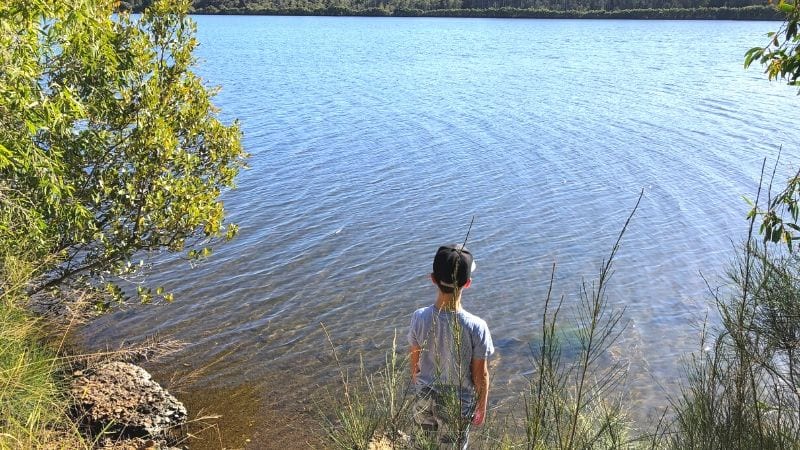
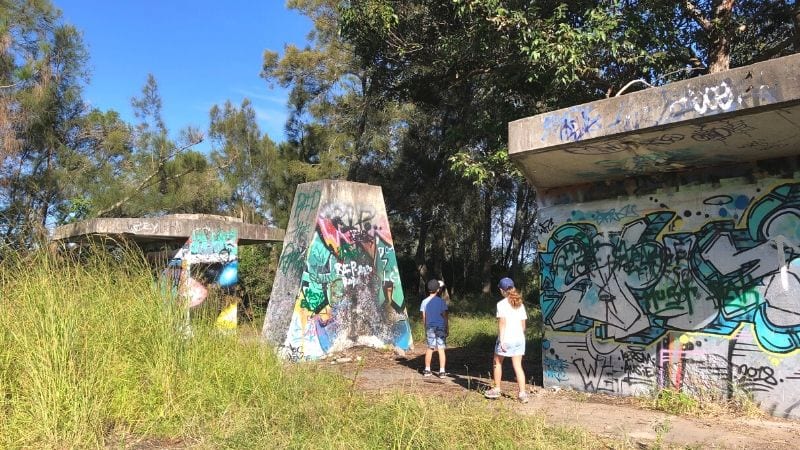
Belmont Lagoon Birdlife
Belmont Lagoon together with the greater Belmont Wetlands area is an important haven for local coastal birds as well as migratory birds. In the early morning or late afternoon, the birds are most active so this is a great time to go for a walk. Late spring, early summer at the lagoon you’ll see an amazing display of birds gathering and feeding. The slow tidal interchange allows the birds to feed in the shallows. Some birds you might see include the Black Swan, Royal Spoonbill, Superb Blue Wren, Variegated Wren, Black-faced Cuckoo Shrike, Eastern Whip Bird, Welcome Swallow and international migratory birds, such as the Bar-Tailed Godwit. When we visited we saw pelicans swimming around.
Discover somewhere new
Keep in mind that this walk is essentially in a lagoon/swamp. There are no green grassed areas or picnic tables. What you will discover is a piece of Lake Macquarie’s history, and how that has changed this body of water. Explore the greater Belmont Wetlands State Park and take a walk with the wildflowers during winter, or the sand dunes loop. Explore more of Lake Macquarie today.
Looking for more walks around Lake Macquarie. Check out our Out & About section.
This review is proudly sponsored by..
References:
Belmont Wetlands {Accessed 17/5/20}
Lake Mac Libraries: Belmont Lagoon Aboriginal Heritage {Accessed 17/5/20}
Belmont Lagoon Spit Walk Wildwalks {Accessed 17/5/20}
Miromaa: Awabakal Dreaming – When The Moon Cried {Accessed 17/5/20}
Belmont Lagoon HBOC {Accessed 18/5/20}




